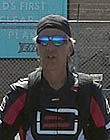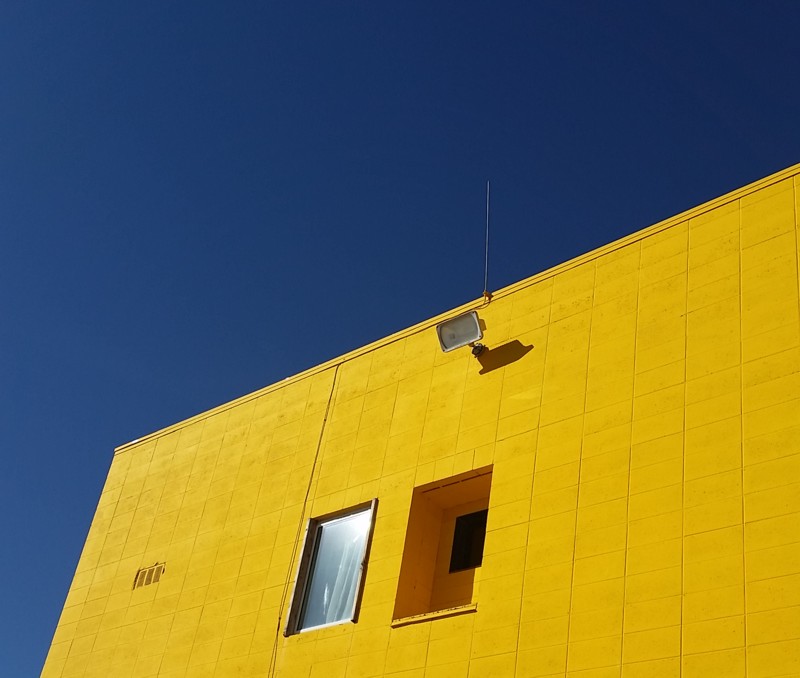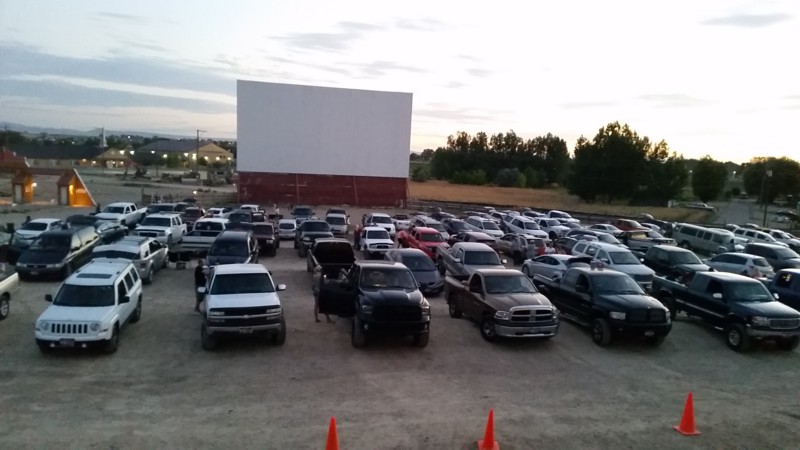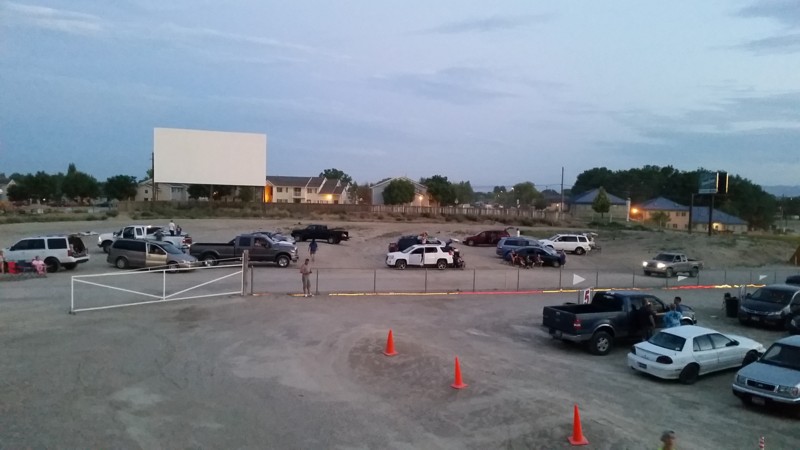|
|
This topic comprises 3 pages: 1 2 3
|
|
Author
|
Topic: Drive-In - FM transmission coverage issues
|
Monte L Fullmer
Film God

Posts: 8367
From: Nampa, Idaho, USA
Registered: Nov 2004
|
 posted 07-04-2016 01:41 AM
posted 07-04-2016 01:41 AM




(Sorry, posted this in the wrong forum. Wanted this posted in the Digital forum. Please move this post to the correct forum, if needed.)
Need a little help and advice if possible on this issue:
I take care of a drive-in in our area where we have some FM broadcast coverage issues.
Some portions of the field receives the signal with no issues, and some areas, the signal comes in rather sketchy, or none at all. We have a side yard that carries the overflow and also experience broadcast issues.
The field is a gradual downward sloped field with the two story building located on the top of the sloped field.
Booth is located on the second floor with the broadcast antenna, which is only three feet high, being mounted on the front edge of the building and above the port window.
Sound from the JSD60 feeds the transmitter.
Are we looking at either an antenna issue, or an additional transmitter?
Please, any tips, suggestions and advice would help us move forward with this issue.
Thx again -- Monte
| IP: Logged
|
|
|
|
Dave Macaulay
Film God

Posts: 2321
From: Toronto, Canada
Registered: Apr 2001
|
 posted 07-04-2016 08:33 AM
posted 07-04-2016 08:33 AM




What symptoms do "rather sketchy, or none at all" present? Is this a new problem or was the signal reception always poor?
Tune a radio (a cheap radio without muting!) to your frequency with the transmitter off. Do you hear confusing random-ish noise (distant stations superimposed - unless you're way far from civilization you will probably hear some bits of transmission on all 100 frequencies), or can you pick up a station clearly?
As Jack said, getting enough RF signal to override a competing signal can take lots of power. Obviously you didn't pick your local FM station's frequency but stations come and go regularly, maybe a new one is stepping on your signal. Overcoming outside signals means you will need a higher power transmitter, higher gain antenna ... or must move to a different "quieter" frequency. If you're in one bad location halfway between two powerful stations sharing the frequency the signal will be strong but confused, fading between them randomly: that may sound like a clear channel but actually the signals could be impossible to override with a low power transmitter.
If you hear only white noise or weak distant stations on the radio test above, I suspect you have a transmitter or antenna problem, drive-in transmitters are designed to cover the lot properly. Animals and weather can damage the feedline and antenna. Transmitters fail. Feedline coax must be the correct impedance... I've seen this wrong and it really smacks down radiated power.
Some transmitters have adjustable power output, try changing that if you have it? Like amp gain controls, a dirty one can cause lost signal.
Changing output power or frequency may violate the terms of any transmitter license required in your area so tread carefully!
Who installed the system?
You can unpack a transmitter, cable, and antenna, plug it all together... and get an acceptable result. Or not. To check it's working correctly and optimize signal strength you need equipment that's not worth buying just to set up one transmitter. Find your local amateur radio store (or an experienced ham operator) and ask them to have a look. It isn't hard to check all components are working properly and to tune the antenna for maximum power radiation when you have the necessary instruments.
| IP: Logged
|
|
|
|
|
|
|
|
|
|
|
|
|
|
|
|
Jack Ondracek
Film God

Posts: 2348
From: Port Orchard, WA, USA
Registered: Oct 2002
|
 posted 07-06-2016 12:32 PM
posted 07-06-2016 12:32 PM





Usually not, Scott. It really depends on what else is out there. If the channel you select has nothing on it, you can get by with a very small signal. If you decide to "share" a channel, your power needs go up quickly, even if the signal you're trying to overcome is low power and far away.
I once saw an older drive-in get by with a test bench signal generator and a Radio Shack antenna booster, hooked up in reverse to a TV antenna. Not much power there, but it covered the field pretty well.
I think the issue is more a matter of equipment quality. Most of the really low-powered gear out there is "lightly built" (read: 'cheap'), and support is nonexistent. I'd be reluctant to risk a busy night on that kind of equipment. BW Broadcast is pretty good stuff, though possibly on the fringe of what some drive-in operators would consider "expensive". If you're looking for reliability, support and a healthy installed base, it's one of the best choices out there. Also, as Tim mentioned, the power can be drastically reduced, even though it does have 5 watts available. Any drive-in that might consider using that kind of horsepower would either have serious antenna problems or an FCC death wish.
Tony brings up a good point about trying to relocate the antenna, though I don't see shadowing as being much of a problem in a small area. Still, it's worth a try and doesn't cost as much as the other options.
| IP: Logged
|
|
Monte L Fullmer
Film God

Posts: 8367
From: Nampa, Idaho, USA
Registered: Nov 2004
|
 posted 07-06-2016 06:42 PM
posted 07-06-2016 06:42 PM




quote: Tony Bandiera Jr
The existing antenna location may have been adequate when first installed, especially if there were no competing commercial stations at that time. But as the transmitter ages (and possibly lost some output power) and other stations came online the combination of the two could have created this problem.
Got some tips from a radio operator in the area:
First off: bet this transmitter needs to be tuned for the yard since it prob hasn't been done in ages along with more FM stations coming up online in this area.
Showed him a pic of the antenna. He mentions that its an omnidirectional type which is fine for the field. Granted, it's not high enough to have a direct line shot to the side fields.
The transmitter was designed for just one yard only. This drive in was split into three fields, but for now, just the middle yard is used while on busy weekends, one side yard is also used since it has a good view to the center screen.
He also mention to boost up the MOD just slightly and to check to see if my audio is barely lighting up the overload lights.
Big thing that the freq is between two power stations.
We're using 105.5 and I have powerful stations on each side being, 105.1 and 105.9 .
Looks like if I can find weaker stations down below 90.1, I can use this and overpower the weaker ones with the MOD increase.
Have to do this at nighttime to get away from the sun's interference.
This is the Terrace Dr-In in Caldwell - a three screen location with just the center screen being used as present. In the future, we're planning on getting the other two side screens lit, hopefully for next season.
thx - Monte
| IP: Logged
|
|
|
|
Jack Ondracek
Film God

Posts: 2348
From: Port Orchard, WA, USA
Registered: Oct 2002
|
 posted 07-06-2016 09:24 PM
posted 07-06-2016 09:24 PM





Hi, Monte.
My daughter and I almost made a trip over there last year. We were in town, rebuilding a commercial transmitter site in the Notus area. Wound up looking at the Parma drive-in instead.
I'd just start by moving the antenna around. That was probably the most practical first suggestion. While you're at it, make sure all connections are clean, tight and moisture free. Corrosion could be the cause of all of this. Given what I've seen of your winters, it could very well be your whole problem.
You can't "tune a transmitter" to anything but its antenna. It matches it or it doesn't. It can't be "tuned to the yard" any more than you could tune one of your local commercial transmitters to its city of license. There's no such thing.
Mod levels won't make a bit of difference in your case. This isn't a 100,000 watt station... you need to think less like a commercial setup and more like Mr. Microphone. With what you're working with, you can't overpower anything by raising modulation levels on your FM transmitter. However, you can raise distortion in your own audio by doing so.
Come to think of it... just turn your audio completely OFF. If your coverage is even over the field and you're not dealing with external interference, your radio will stay quiet, with no static as you move around. Get a good, quiet carrier throughout and the audio part will be fine.
Hopefully, you have some kind of automatic gain circuitry in your system. There's way too much dynamic range in digital audio to run from the projector straight through the transmitter.
Speaking of which, it would really help if you'd post what kind of transmitter you have & its power level.
An omni antenna is fine, but again, we need to know what kind it is. Some have gain built into them (like the Comet)... some don't. This will help determine what you should be getting from what available power you have.
Those adjacent stations could be causing you some trouble, but probably not complete devastation. Getting away from them is a good idea.
If the sun is doing anything but improving your tan, you have serious technical problems there.
Lindsay is correct about not putting too much trust in the internal metering... unless it's a known brand, like the BW Broadcast stuff. I rely on external test equipment in all of my commercial work and use the transmitter's internal metering only to validate what I think I already know. It can indicate that the transmitter is happy with its load and give you some idea of modulation levels (an overload light???). Beyond that, I wouldn't put too much stock in it..
| IP: Logged
|
|
|
|
|
|
All times are Central (GMT -6:00)
|
This topic comprises 3 pages: 1 2 3
|
Powered by Infopop Corporation
UBB.classicTM
6.3.1.2
The Film-Tech Forums are designed for various members related to the cinema industry to express their opinions, viewpoints and testimonials on various products, services and events based upon speculation, personal knowledge and factual information through use, therefore all views represented here allow no liability upon the publishers of this web site and the owners of said views assume no liability for any ill will resulting from these postings. The posts made here are for educational as well as entertainment purposes and as such anyone viewing this portion of the website must accept these views as statements of the author of that opinion
and agrees to release the authors from any and all liability.
|

 Home
Home
 Products
Products
 Store
Store
 Forum
Forum
 Warehouse
Warehouse
 Contact Us
Contact Us




 Printer-friendly view of this topic
Printer-friendly view of this topic










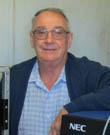
![[Big Grin]](biggrin.gif)
![[Roll Eyes]](rolleyes.gif)

